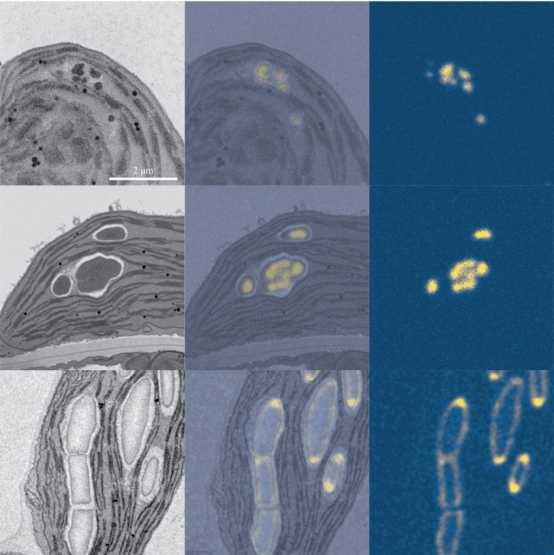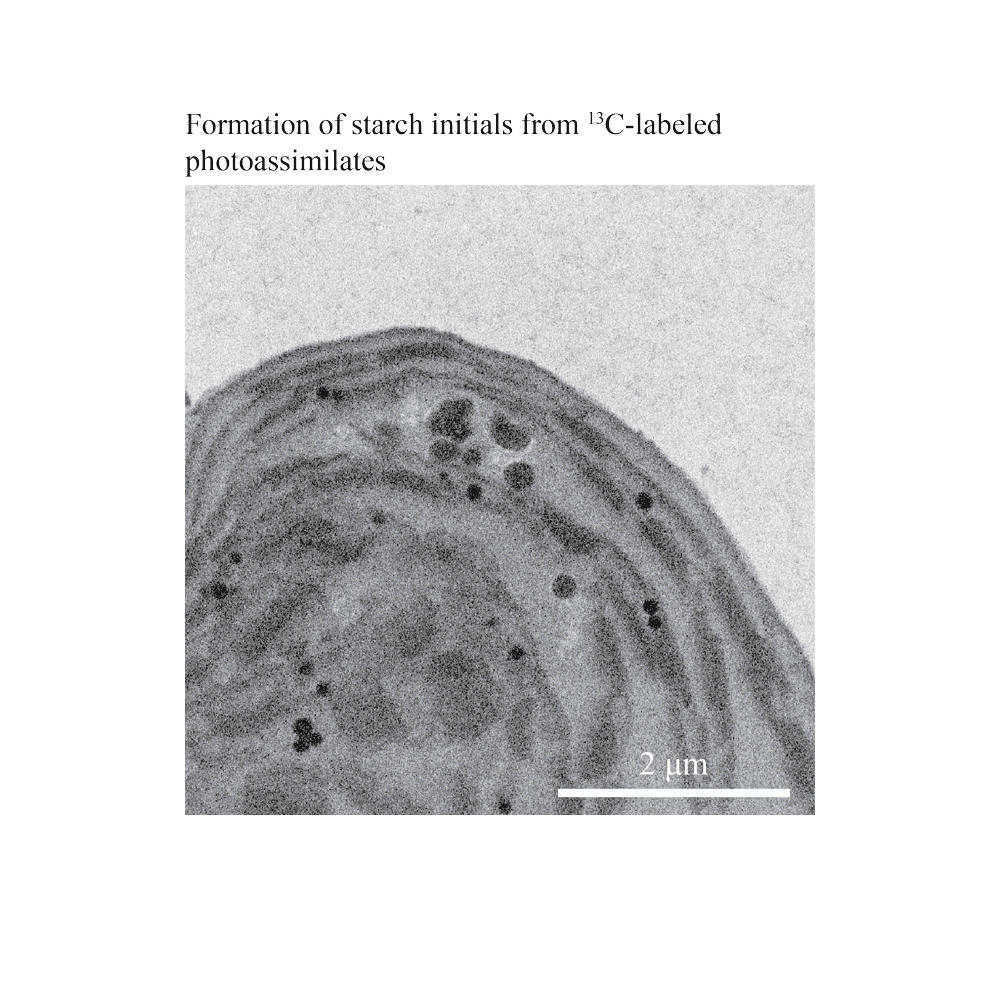Starch granule biogenesis caught in the act
A Nature Communications article, published by the Zeeman group (IMPB) in collaboration with Anders Meibom at EPFL, uses sophisticated imaging methods to capture previously unseen facets of starch metabolism. Groundbreaking visualizations depict granule initiation, fusion, and growth into flattened structures.

Starch is a major source of carbohydrate in human nutrition and a valuable raw material for industry. It is synthesized only in plants, where it serves to store photo-assimilated carbon as compact, inert carbohydrate. In leaves, this happens every day anew, as multiple semi-crystalline starch granules grow inside the plant’s photosynthetic organelles, the chloroplasts. Much is known about the enzymatic steps of starch polymer biosynthesis, yet the processes assembling them into multiple granules with characteristic, flattened lenticular morphologies is not understood.
Researchers in the Zeeman laboratory applied a set of innovative imaging techniques to study the biogenesis of starch granules, starting from the very beginning. After forcing Arabidopsis thaliana plants to consume the very last of their starch reserves, the formation of a multitude of tiny new structures – starch initials – could be observed in their chloroplasts by electron tomography, almost immediately after photosynthesis began. By feeding the plants with isotope-labeled CO2 and mapping the incorporation patterns with Nano-SIMS, these initials could be seen to fuse and subsequently grow anisotropically, culminating in their flattened shape. These results provide new insight into the biogenesis of one of the most important plant-derived compounds.
Link to the paper in external page Nature Communications
